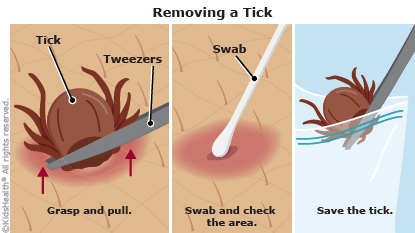Medication Pick UP

If your child has any medication in the Health Office from anytime this year, please come and pick it up before 3:00 pm on June 21st. Per policy, I must dispose of any medication left in the Health Office at the end of the school year.
This includes:
Diastat
EpiPens
Inhalers
Benadryl
Daily meds
Any Medication!
Please call or email me with any questions or concerns.
Summer Tips
Leaves of three, let them be!
Teach kids to identify and leave alone plants like poison ivy, poison oak and poison sumac.
Prevention
Poison ivy can grow anywhere — from the woods to suburban backyards. And it's hard to identify: Not only can the green leaves of poison plants blend right in with other plants and brush, but there are several types of poison ivy, and each one can look different depending on the time of year.

Signs and Symptoms
What to Do
-
- Remove any clothing that has touched the plant or rash and wash all recently worn clothing.
- Gently wash skin and scrub under fingernails right away with soap and water.
- Cut fingernails short to keep your child from breaking the skin when scratching.
- Place cool compresses on the skin as needed.
- For itching: add oatmeal to the bath; use calamine lotion (do not use on the face or on the genitals); and, if needed, give your child diphenhydramine.
Seek Medical Care If:
-
the rash covers a large portion of the body or is on the face or genitals
-
the rash is getting worse despite home treatment
-
the skin looks infected (increasing redness, warmth, pain, swelling, or pus)
Check for Ticks!
Don’t forget to look behind your child’s ears, in the scalp, under arms and in the groin area.
What to Do
Step 1: Use tweezers to grasp the tick firmly at its head or mouth, next to the skin.
Step 2: Pull firmly and steadily until the tick lets go of the skin. Do not twist the tick or rock it from side to side. If part of the tick stays in the skin, don't worry. It will eventually come out on its own.
.
Step 3: Release the tick into a jar or zip-locked bag in case you want to have it identified later on.
Step 4: Wash your hands and the site of the bite with soap and water.
Step 5: Swab the bite site with alcohol.
Never use petroleum jelly or a hot match to kill and remove a tick. These methods don't get the tick off the skin, and can cause it to burrow deeper and release more saliva (which increases the chances of disease transmission).
Next Steps
Call your doctor after the tick has been removed to find out if your child should be evaluated. In certain cases, a doctor will prescribe antibiotics if a child is at high risk for Lyme disease.
Call the doctor right away if your child develops a red-ringed rash or if the skin becomes red and irritated. Also call if your child has flu-like symptoms, joint pain or a swollen joint, or facial paralysis. Although other conditions can cause similar symptoms, you'll want to have your child seen early on so that if it is Lyme disease, treatment can begin as soon as possible.

Sun Safety
According to the American Cancer Society, skin cancer is the most common cancer. About 3.3 million Americans are diagnosed with skin cancer each year. But, skin cancer is also one of the most preventable cancers!
Remember Slip, Slop, Slap, Seek and Slide when you think of sun safety.
Slip: Slip on a Shirt!
(Or other protective clothing)
Slop: Slop on Sunscreen!
(Make sure it is at least SPF 30+ and reapply as directed)
**Please remember to slop on sunscreen before school. I can not apply sunscreen to the students during the school day without a doctor’s order.
Slap: Slap on a Hat!
(Preferably one that shades your face, ears and back of you neck)
Seek: Seek Shade whenever possible.
Slide: Slide on Sunglasses!
(To protect your eyes and the sensitive skin around them)
Have fun in the sun and outside, but be safe and sunsmart!
Check out this 30 second video: Sunsmart Sid the Seagull Video

Be Waterwise
Water Safety Outdoors
First, teach kids never to swim alone. Using the buddy system means there's always someone looking out for you. Make sure your kids understand that swimming in a pool is different from swimming in a lake or the ocean — there are different hazards for each.
Here are some tips:
It's important to teach your kids proper pool and spa behavior, and to make sure that you take the right precautions, too. Let kids know that they should contact the lifeguard or an adult if there's an emergency.
Kids shouldn't run or push around the pool and should never dive in areas that are not marked for diving. If the weather turns bad (especially if there's lightning), they should get out of the pool immediately.
Above all, supervise your kids at all times. Don't assume that just because your child took swimming lessons or is using a flotation device such as an inner tube or inflatable raft that there's no drowning risk. If you're at a party, it's especially easy to become distracted, so designate an adult who will be responsible for watching the children. If you leave your child with a babysitter, make sure he or she knows your rules for the pool.
Seconds count when it comes to water emergencies, so take a cordless phone with you when you're watching kids during water play. A quick-dial feature keyed to 911 or your local emergency center will also save additional seconds. If you receive a call while supervising kids, keep your conversation brief to prevent being distracted.
At Lakes and Ponds
-
Don't let kids swim without adult supervision — lakes or ponds might be shallow near the bank, but increase in depth sharply farther out from shore.
-
Ponds and lakes may hide jagged rocks, broken glass, or trash
-
Make sure kids wear foot protection; even in the water, they should wear aqua socks or water shoes.
-
Watch out for weeds and grass that could entangle a leg or arm.
At Beaches
- Teach kids to always swim when and where a lifeguard is on duty. They shouldn't swim close to piers or pilings because sudden water movements may cause swimmers to collide with them.
- Unlike the calm waters of a swimming pool, the beach has special dangers like currents and tides. Check with the lifeguard when you arrive to find out about the water conditions.
- Don't allow kids to swim in large waves or undertows, and tell them never to stand with their back to the water because a sudden wave can easily knock them over.
- Teach kids that if they're caught in a rip current or undertow, they should swim parallel to the shore or should tread water and call for a lifeguard's help.
- The stings of jellyfish or Portuguese man-of-wars can be painful, so tell kids to watch out for them in the water and to tell an adult right away if they're stung.
Whether at the lake or at the beach, teach your child to get out of the water during bad weather, especially lightning.
At Water Parks
Water parks can be a lot of fun for kids, as long as you keep safety in mind. Before you go, make sure the park is monitored by qualified lifeguards. Once there, read all posted signs before letting your child on any rides (many rides have age, height, weight, or health requirements, and each has a different depth of water).
Teach your kids to follow all rules and directions, such as walking instead of running and always going down the water slide in the right position — feet first and face up. A Coast-Guard approved life jacket is a good idea, too.
Know which rides are appropriate for your child's age and development. For example, wave pools can quickly go from calm to rough, putting even a good swimmer in over his or her head. Younger children can be intimidated by older kids' splashing and roughhousing.
Information in this newsletter taken directly from kidshealth.org
Learn more summer tips here.
Have a wonderful and safe Summer Break! I will see you in the Fall!